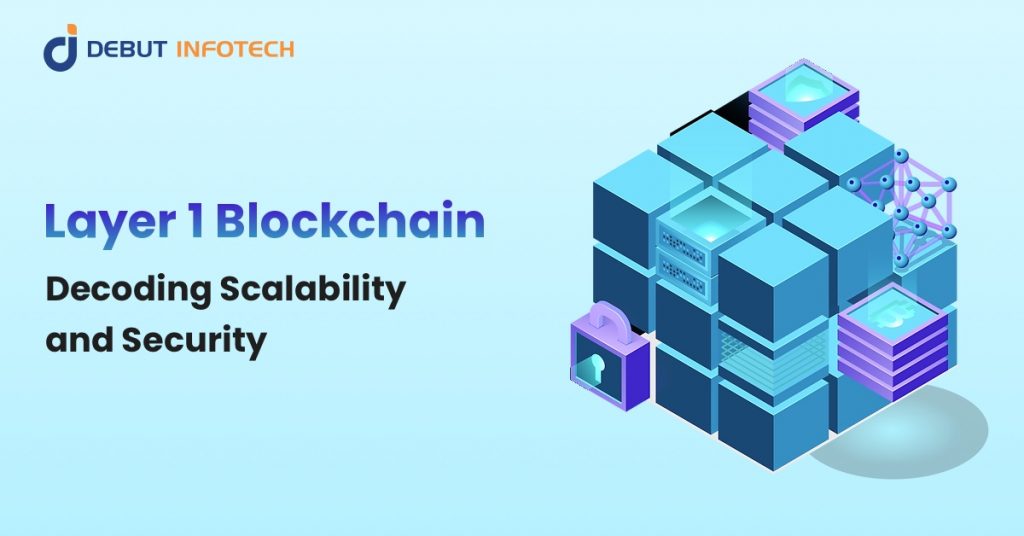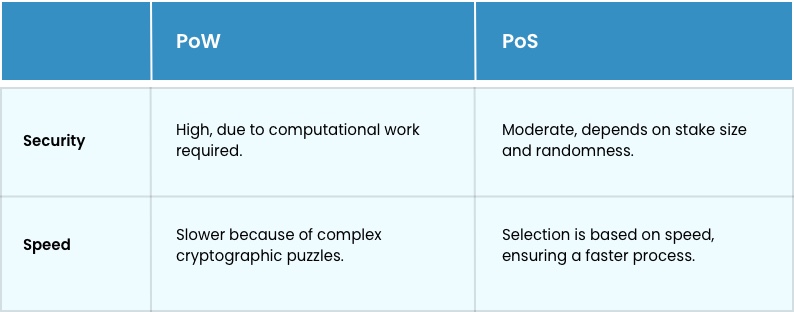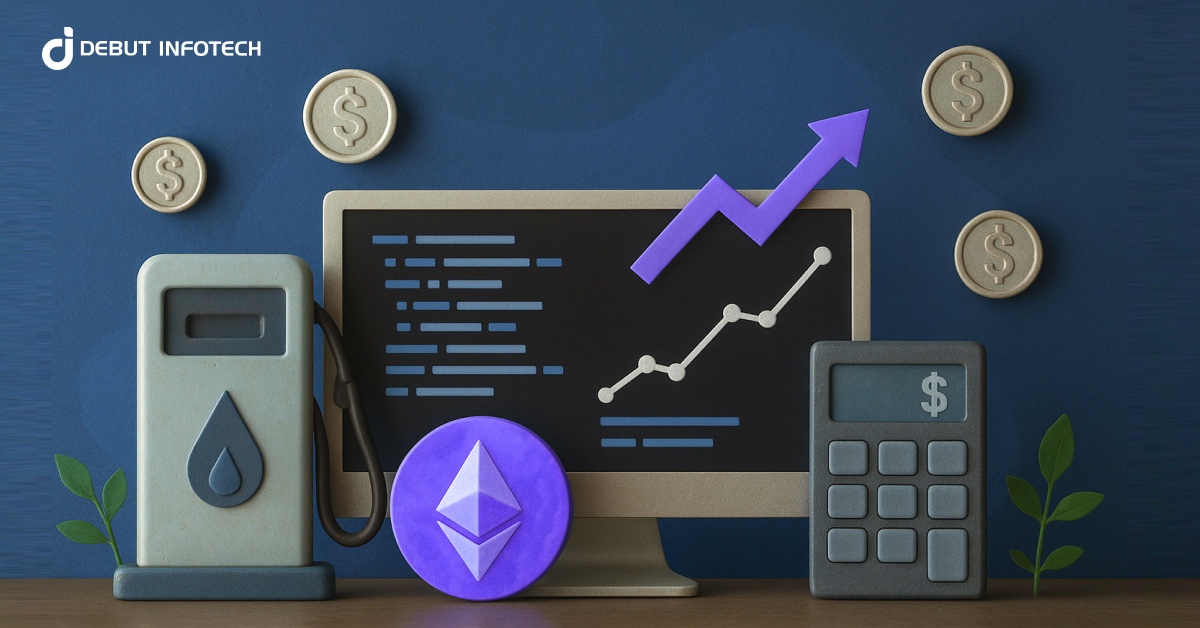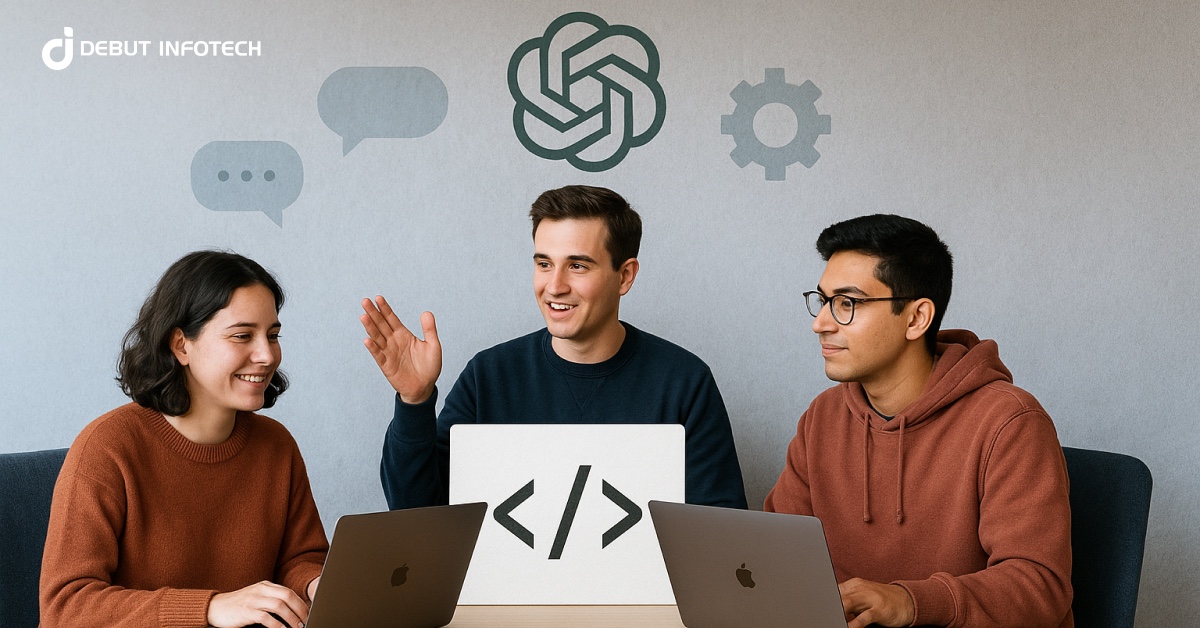
Imagining the cityscape, you’re surrounded by a multitude of colossal skyscrapers, each one representing its unique blockchain network. Each building represents a different blockchain network – Bitcoin, Ethereum, Polkadot – all part of the ever-growing skyline. But what’s keeping these giants upright? What’s at their foundation?
The answer is layer 1 blockchain.
Grasping the fundamentals of layer 1 blockchains can be likened to mastering a foreign language. It might seem daunting initially but trust me; it’s more straightforward than you think.
I’m about to guide you through an enlightening tour into this foundational layer of our virtual cityscape. We’ll uncover how consensus algorithms work like urban planners coordinating traffic flow or why scalability solutions are akin to improving public transportation systems.
Those tall structures you see, aren’t they captivating? Their height reaching for the sky is truly a sight to behold. It’s amazing how architecture has evolved.
Understanding Layer 1 Blockchain
The term ‘layer 1’ refers to the base network in a blockchain system. This is where the magic happens, with key networks such as Bitcoin, BNB Chain, or Ethereum. These foundational layers play an essential role in maintaining decentralized systems and supporting advanced applications.
In simple terms, layer-1 blockchains are like the main roads of our cities. They handle heavy traffic and ensure transactions get from point A to point B safely and efficiently. Now, imagine trying to add more lanes or change how traffic flows on these busy highways without causing disruption – that’s similar to upgrading layer-1 protocols.
Defining Layer 1 Blockchain
To further understand this concept, we need a deeper dive into what constitutes a layer-1 blockchain. Think about it like this: if Bitcoin were an apple tree (yes, stay with me here), then its root system – providing nourishment for growth and stability against storms – would be akin to its foundational layer.
This underlying infrastructure can validate and finalize transactions independently; no need for another network’s approval. That means every transaction made within the Bitcoin ecosystem gets stamped by its core protocol before becoming final balance changes — kinda cool right?
Apart from validating transactions securely & effectively— which already sounds pretty impressive — there’s more. The true beauty lies in their ability not just merely to process digital assets but also to run smart contracts while ensuring increased demand doesn’t compromise security or decentralization aspects—an ultimate triple threat.
Pillars of Decentralized Network
We’ve talked about highway systems and apple trees but let’s switch gears one last time – think of them as the structural pillars holding up a building. In this case, our digital edifice of blockchain technology. Without these critical supporting beams (our layer-1 blockchains), we wouldn’t have a sturdy foundation for more complex structures.
So, the next time you’re deep in thought about blockchain networks and their complex mechanisms, imagine busy highways or tree roots nourishing an apple tree. Or think of pillars holding up your favorite architectural wonder. These metaphors can help make sense of it all because they reflect how interconnected and vital each part is to the whole system.
Consensus Mechanisms in Layer 1 Blockchain
The heart of any layer-1 blockchain lies in its consensus mechanism. This crucial component lets network participants agree on the validity of transactions, shaping both the security and efficiency of a blockchain.
Proof-of-Work (PoW), famously used by Bitcoin, is one such mechanism. Mining necessitates that individuals figure out intricate cryptographic puzzles before being allowed to attach fresh blocks to the chain. Although secure, this process often results in slower transaction speeds and heavy energy consumption.
An alternative solution is Proof-of-Stake (PoS). Here, validators are chosen based on their stake or ownership of tokens within the network. The more tokens you hold, the higher your chances are to validate transactions and earn rewards. But remember – it’s not all about having a large number; being randomly selected also plays an important role here.
The Role Of Delegated Proof-of-Stake (DPoS) In Network Security
To further improve scalability while maintaining decent security levels, some blockchains use Delegated Proof-of-Stake (DPoS).
In DPoS systems like EOS.IO’s main chain, token holders vote for delegates who then validate transactions and maintain network operations. It’s similar to electing politicians based on public trust. However, as with real-world politics, there may be concerns over centralization if only a few nodes control most voting power.
PoW vs PoS: A Comparative Look At Consensus Mechanisms

Transaction Speed and Throughput in Layer 1 Blockchain
The world of blockchain is often akin to a high-speed race, where the fastest transaction speed can mean winning or losing. But there’s more than just raw speed involved. The throughput—the number of transactions processed per second—also plays a pivotal role.
In layer-1 blockchains like Bitcoin, these factors are closely tied to how transaction fees work. For instance, if you’ve ever sent some Bitcoin during peak traffic times on the network, you may have noticed that your transaction took longer than expected. This is because when it comes to processing transactions on a busy network, miners prioritize those who pay higher fees—a bit like getting faster delivery by paying for express shipping.
SegWit, a novel scaling approach employed by Bitcoin, has been an essential element in increasing its capacity. Lightning Network, another layer-1 technology developed specifically for Bitcoin helps improve this further by changing how block data gets organized.
How does Transaction Speed Work?
To understand transaction speeds better let’s use our highway analogy again: each car represents a single operation within the network – whether sending tokens from one wallet to another or executing smart contracts. A congested highway means slower travel time and increased frustration – much like what happens when heavy traffic clogs up blockchain networks.
Tackling Throughput Issues
A major hurdle that layer-1 blockchains face regarding their scalability solutions involves handling large numbers of simultaneous transactions without slowing down — hence why we call it ‘throughput’. Some networks attempt alternative solutions such as increasing their block size limit so they can cram more ‘cars’ into every ‘lane’, but this doesn’t always solve congestion issues completely.
The Blockchain Trilemma and Scalability Issues
Layer-1 blockchains, like Bitcoin or Ethereum, are challenged by the blockchain trilemma. It’s a juggling act between decentralization, security, and scalability that has made these networks both groundbreaking and limited.
Understanding the Blockchain Trilemma
The ‘blockchain trilemma’ term has been coined to refer to the difficulty of optimizing decentralization, security, and scalability in blockchain networks. In simple terms – it’s tough to have your cake (decentralization) and eat it too (security) while sharing with a large number of guests (scalability).
In decentralized systems such as layer 1 blockchains, every network participant gets an equal say on transaction validation. This promotes fairness but also means more time is needed for consensus leading to slower transaction speeds.
Addressing Scalability Issues
A common solution used by many layer-1 projects focuses on increasing block size to process transactions faster; this approach was notably adopted by Bitcoin Cash.
But simply increasing block size doesn’t fully solve the problem because larger blocks can lead to heavy traffic in verifying nodes which may jeopardize network security. A perfect example of trying too hard only causing more problems.
To address this issue alternative solutions like Bitcoin’s Lightning Network, a Layer-2 protocol allowing users for quick payments off-chain were developed.
So, while the blockchain trilemma remains a tough nut to crack for layer 1 networks, folks have rolled out projects using unique techniques to boost scalability. It’s all about creative problem-solving and understanding that solutions are there, just waiting to be discovered.
Examples of Layer 1 Blockchain Projects
Diving into the vast ocean of blockchain technology, we encounter some fascinating creatures. One such specimen is Bitcoin, the granddaddy of layer-1 blockchains.
Exploring Bitcoin as a Layer 1 Blockchain Project
The charm behind Bitcoin’s design lies in its robustness and simplicity. Its consensus mechanism allows network participants to validate transactions without needing an external entity. It’s like being at a party where everyone gets to decide on the music – pure democracy.
This open-source project paved the way for others, leading us to Ethereum – another captivating example.
Ethereum took things up a notch by introducing smart contracts that enable decentralized applications (DApps). Imagine writing your own rules for how digital assets are transferred, just like creating custom game rules with friends. Ethereum stands out because it offers more than just transferring digital currency; it creates an entire world of possibilities.
Polkadot, a rising star among layer-1 projects, aims to fix interoperability issues between different blockchains – a bit like building bridges between isolated islands.
Lastly, let’s not forget about Solana, a newcomer that has taken center stage recently due to its impressive transaction speeds. In essence, Solana is akin to offering express lanes on a busy highway, tackling congestion problems during heavy traffic times.
All these layer-1 blockchain projects have their unique features and strengths, showcasing the diverse potential of blockchain technology. These aren’t just techy terms; they are revolutions in digital interaction. They’re like the superheroes of our modern technological era – each with a unique power contributing to a better-decentralized world.
Layer-1 blockchains serve as foundational stones for decentralized systems, enabling improved transaction speed and scalability solutions. The versatility seen across Bitcoin, Ethereum, Polkadot, and Solana exemplifies how much more there is to learn about this incredible technology. Who knows? Maybe you’ll find your favorite among them.
Enhancing Scalability in Layer 1 Blockchain with Sharding and Lightning Network
Sharding is a scaling solution that takes a large task, like validating transactions on the blockchain network, and breaks it down into smaller tasks. This method can significantly improve transaction speed by distributing work across multiple nodes instead of one single node.
In essence, sharding divides an entire blockchain into several pieces or “shards”, each capable of processing its own transactions and smart contracts. When we implement this database partitioning technique to layer-1 blockchains, they become more scalable as it increases their capacity to handle heavy traffic without slowing down.
The power of sharding lies in parallelism; imagine being at a supermarket checkout lane. Without sharding, you’re stuck behind someone with an overflowing cart. But if we apply the concept of ‘shards’, then we have opened up more lanes, allowing users to check out faster because there are now many separate queues.
Bitcoin’s original design didn’t include any scalability solutions like increasing block size or implementing sharding protocols for faster throughput. However, alternative solutions were proposed later on, such as SegWit, which improved Bitcoin’s transaction speeds by altering how data was stored within blocks.
A Flash Of Lightning In The Scaling Storm
An intriguing proposition aimed at addressing scalability issues while maintaining security is the Lightning Network. It operates above the main chain – hence termed as ‘layer-2’ – yet relies on layer 1 for final balance settlements.
This system creates off-chain payment channels where participants transact freely without having every operation recorded onto the main chain immediately, thus speeding up overall process times drastically. Once all business between parties concludes, then only the final state gets recorded onto the main chain.
It’s like running a bar tab, where every drink you order isn’t individually processed. Instead, only your final balance is settled at the end of the night – this saves time and resources, making transactions swift and efficient.
In conclusion, layer-1 blockchains present their difficulties because of how they are structured. But thanks to clever solutions like
Security and Decentralization in Layer 1 Blockchain
A crucial aspect of layer-1 blockchains is the balance between security measures and decentralization. But what does that mean for you? Let’s dive into it.
In a decentralized network, transactions are validated by multiple nodes or participants rather than one central authority. This distribution reduces risks related to hacking, as there isn’t just one point of failure.
This leads us to another critical part – Consensus Mechanisms. They’re used to validate transactions on the blockchain, ensuring they are genuine. The two most popular consensus mechanisms are PoW and PoS.
PoW Networks & Security Measures
Take Bitcoin, for example – it uses PoW where miners solve complex mathematical problems to add blocks onto the chain. However, this method consumes a lot of energy but ensures high security due to its computational difficulty.
The higher computing power required means an attacker would need control over more than half of the entire blockchain’s mining resources—an unlikely event—to manipulate transaction records effectively. To understand how Bitcoin works in more detail, read further.
Decentralized Finance: A New Dawn with Layer 1 Blockchains
Ethereum, on the other hand, utilizes the PoS consensus mechanism which relies less on computational power but more on ownership stakes held by validators; making Ethereum much greener while still maintaining decent levels of security through economic penalties for malicious actors.
This forms a cornerstone for decentralized finance (DeFi), letting users engage directly with financial applications without intermediaries, leading to lower costs and more control over their digital assets.
Moreover, the increased demand for decentralized systems has seen a rise in DeFi, offering a whole new world of opportunities within layer 1 blockchains.
Blockchain Projects Focused on Security & Decentralization
A large amount of security. Ethereum’s PoS system is more energy-efficient than Bitcoin’s PoW, yet it doesn’t compromise the integrity of transactions. This makes it a great choice for those who prioritize both environmental sustainability and robust transaction validation.
Conclusion
Having journeyed through the world of layer 1 blockchain, you’re now familiar with its vital role as the backbone of decentralized networks, facilitating smart contracts and transactions. Your understanding now extends to the core consensus protocols like Proof of Work (PoW) and Proof of Stake (PoS), which are essential for maintaining network security and validating transactions.
In our exploration, we discussed scalability solutions, highlighting concepts like sharding to distribute network load, much like adding extra lanes to a busy highway to speed up transaction times. We also showcased flagship projects such as Bitcoin and Ethereum, which are prime examples of layer 1 blockchain in action.
At this juncture, it’s crucial to recognize the contributions of our enterprise Debut Infotech, we are at the forefront of blockchain development services. Catering to various business sectors, our wide pool of blockchain teams excels in delivering bespoke blockchain solutions.
Moreover, our team, renowned for its expertise and innovation, is dedicated to understanding and fulfilling the unique requirements of each project. Having an impressive portfolio of successful projects stands testament to their ability to craft tailored solutions that meet the diverse needs of their clients.
Understanding layer 1 blockchains goes beyond perceiving them as complex digital infrastructures; they are foundational elements supporting our ever-expanding digital universe.
If you’re contemplating integrating blockchain into your projects and seeking expert advice or assistance, Debut Infotech is your go-to partner. We are just a call away, ready to collaborate and help you navigate the blockchain landscape to create exceptional digital experiences.
FAQs
A. A Layer 1 blockchain serves as the foundational technology in the blockchain ecosystem. It’s the base level where various transactions are recorded and stored across a distributed network. Layer 1 blockchains are crucial for ensuring decentralized security and transparency, forming the backbone of more complex blockchain architectures.
A. The blockchain industry has several notable Layer 1 blockchains. Some of the key players include Bitcoin, Ethereum, Binance Smart Chain, Cardano, Solana, and Polkadot. Each of these blockchains brings unique features and innovations to the table, catering to different needs and use cases in the digital ecosystem.
A. As of now, the top Layer 1 blockchains are typically considered to be Bitcoin and Ethereum, primarily due to their extensive adoption, security, and network effects. Other notable contenders include Cardano, which offers a research-driven approach, and Solana, known for its high throughput and scalability. The choice of a ‘top’ blockchain often depends on the specific requirements, such as security, speed, or developer community.
A. The exact number of Layer 1 blockchains is fluid, as the blockchain space is constantly evolving with new entries and developments. However, there are dozens of well-recognized Layer 1 blockchains, each with its own unique features and community. The number grows when considering emerging and niche projects, especially those introduced in 2023 and beyond.
A. Building a Layer 1 blockchain involves several steps, starting with defining the blockchain’s purpose and its consensus mechanism. Developers must create a robust network architecture, implement cryptographic security measures, and develop a user-friendly interface. It requires extensive planning, a deep understanding of blockchain technology, and often a significant development team to ensure scalability, security, and efficiency.
A. The top 5 Layer 1 blockchains, considering various factors like adoption, technology, and community support, typically include Bitcoin, Ethereum, Cardano, Solana, and Polkadot. Each of these has made significant contributions to the blockchain space and continues to evolve, offering unique features and capabilities.


